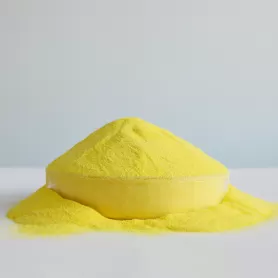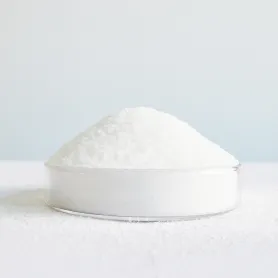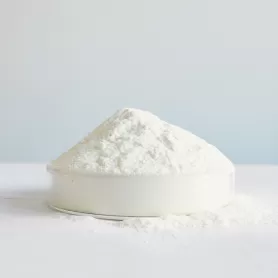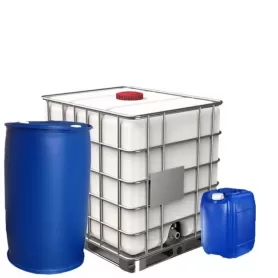What Dissolves Polyacrylamide? Complete Dissolution Guide for Optimal Performance
Understanding Polyacrylamide Solubility
Polyacrylamide is available in various forms: powder, granules, and emulsions. While it is highly soluble in water, PAM does not dissolve in most organic solvents such as alcohols, ketones, or hydrocarbons. Its primary characteristic is that it dissolves efficiently in water, making it ideal for aqueous applications across multiple industries.
The hydrophilic nature of polyacrylamide molecules makes water the universal solvent for all PAM types, including cationic polyacrylamide and anionic polyacrylamide. This water solubility is fundamental to PAM's effectiveness in water treatment applications.
Solvent Compatibility: What Works and What Doesn't
| Solvent Type | Solubility | Application Notes | Recommended Use |
|---|---|---|---|
| Water (H₂O) | Excellent | Primary solvent for all PAM applications | All water treatment processes |
| Ethanol | Insoluble | Causes precipitation of PAM | Not recommended |
| Acetone | Insoluble | No dissolution observed | Not recommended |
| Methanol | Insoluble | Forms gel-like substance | Not recommended |
| Saline Water | Good | Higher salt content may reduce solubility | Industrial applications |
Key Factors for Effective Polyacrylamide Dissolution
Water as the Primary Solvent
The most effective solvent for dissolving polyacrylamide is water. PAM readily dissolves in water to form a homogeneous solution, which can be used in various applications such as wastewater treatment, agriculture, and the oil industry. For optimal results, clean water with minimal impurities is recommended. According to the EPA's water treatment guidelines, water quality significantly impacts polymer performance.
Critical Dissolution Conditions
Optimal Temperature
20°C to 30°C
Warm water accelerates dissolution, but avoid temperatures above 60°C as they can degrade the polymer structure and reduce molecular weight.
Concentration Range
0.1% to 0.5% w/w
Typical concentration range depends on application. Higher concentrations result in more viscous solutions requiring longer dissolution times.
pH Stability
pH 3 to 9
PAM remains stable across this range, but extreme pH levels can cause hydrolysis, reducing effectiveness and molecular weight.
Mixing Speed
200-400 RPM
Gentle mixing prevents polymer chain degradation while ensuring complete dissolution and uniform distribution.
Step-by-Step Polyacrylamide Dissolution Process
Professional Dissolution Procedure
Prepare Water: Use clean, fresh water at room temperature (20°C to 30°C). Ensure water quality meets application requirements and has minimal dissolved solids that could interfere with polymer performance.
Slowly Add the Polymer: Gradually add polyacrylamide powder or granules to the water while continuously stirring. This prevents clumping and ensures uniform dissolution. Add polymer at a rate that allows complete wetting before additional material is introduced.
Continuous Gentle Stirring: Use a low-speed mechanical stirrer (200 to 400 rpm). Stirring should be maintained for 30 to 60 minutes until the solution becomes transparent and lump-free. Avoid high-speed mixing that can degrade polymer chains.
Check for Homogeneity: The solution should be clear and free of undissolved particles. Once the polymer is fully dissolved, allow the solution to age for optimal performance before application to the desired process.
Quality Verification: Test the solution viscosity and clarity to ensure complete dissolution. Properly dissolved PAM solutions should be transparent with uniform viscosity throughout.
Common Dissolution Challenges and Solutions
Troubleshooting Dissolution Problems
Challenge: Clumping and Lump Formation
Cause: Adding polymer too quickly or inadequate initial mixing
Solution: Always add powder slowly in a thin stream while maintaining constant agitation. Consider using a powder feeder for large-scale operations.
Challenge: Incomplete Dissolution
Cause: Low temperature, poor water quality, or insufficient mixing time
Solution: Increase water temperature slightly, use cleaner water source, and extend mixing duration up to 90 minutes for complete dissolution.
Challenge: Polymer Degradation
Cause: Excessive temperature or aggressive mixing
Solution: Monitor temperature closely and use gentle mixing. Consider using variable speed mixers to optimize dissolution conditions.
Challenge: Inconsistent Performance
Cause: Poor mixing, old polymer stock, or contaminated water
Solution: Implement standardized preparation procedures, rotate stock using FIFO principles, and ensure consistent water quality.
Factors Affecting Dissolution Efficiency
Several environmental and operational factors can significantly impact polyacrylamide dissolution efficiency. Understanding these factors helps optimize the preparation process for maximum polymer effectiveness.
Water Quality Considerations
Water hardness, salinity, and pH all influence dissolution rates and final solution quality. According to research published in the Journal of Industrial & Engineering Chemistry, dissolved minerals can affect polymer chain conformation and solubility characteristics.
Total Dissolved Solids (TDS): Less than 1,000 ppm preferred
Hardness: Below 200 ppm CaCO₃ for optimal dissolution
Chlorine content: Less than 0.5 ppm to prevent polymer degradation
Iron content: Below 1 ppm to avoid complexation issues
Environmental Factors
Temperature fluctuations during storage and preparation can affect dissolution characteristics. Maintain consistent environmental conditions in preparation areas to ensure reproducible results.
Why Proper Dissolution Matters for Performance
Dissolving polyacrylamide correctly is crucial for maximizing its effectiveness across all applications. In water treatment processes, a well-dissolved PAM solution can significantly enhance the flocculation process, improving water clarity and reducing turbidity by up to 95% when properly applied.
In enhanced oil recovery applications, proper dissolution ensures the polymer functions as an efficient thickening agent, enhancing recovery efficiency and maintaining reservoir sweep effectiveness. The Society of Petroleum Engineers emphasizes the critical importance of proper polymer preparation for EOR success.
Application-Specific Benefits
Different industries benefit from proper PAM dissolution in specific ways:
Municipal Water Treatment: Properly dissolved cationic PAM enhances primary clarification and sludge dewatering, reducing treatment costs and improving effluent quality.
Mining Operations: Well-prepared anionic PAM solutions improve tailings settlement rates and water recovery in mineral processing operations.
Industrial Applications: Correct dissolution ensures optimal performance in paper manufacturing, textile processing, and other industrial applications where PAM serves as a retention aid or process enhancer.
Advanced Dissolution Techniques
For large-scale operations or challenging water conditions, advanced dissolution techniques may be necessary to achieve optimal results. These methods require specialized equipment but provide superior polymer preparation consistency.
Automated Preparation Systems
Automated polymer preparation systems provide precise control over dissolution conditions, including temperature, mixing speed, and polymer feed rate. These systems ensure consistent solution quality and reduce operator variability in preparation procedures.
In-Line Dilution Systems
Some applications benefit from in-line dilution of concentrated polymer stock solutions. This approach allows for precise dosing control while maintaining polymer activity and reducing preparation time.
Quality Control and Testing
Implementing quality control measures ensures consistent polymer solution quality and treatment effectiveness. Regular testing protocols help identify potential issues before they impact process performance.
Visual inspection for clarity and absence of lumps
Viscosity measurement for consistency verification
pH monitoring to ensure stability range compliance
Intrinsic viscosity testing for molecular weight verification
Performance jar testing for application effectiveness
Need Expert Guidance on Polyacrylamide Dissolution?
Our technical experts provide comprehensive support for optimal PAM preparation and application. Get professional recommendations tailored to your specific requirements.
Contact Our Technical TeamConclusion
In summary, polyacrylamide dissolves effectively in water, provided the right conditions are met. The key factors influencing the dissolution process include water quality, temperature control, proper mixing techniques, and timing. Avoid using organic solvents, as they are ineffective for dissolving polyacrylamide and can cause polymer precipitation or gel formation.
By following the correct dissolution methods and maintaining optimal preparation conditions, you can ensure the polymer performs optimally across various applications. Whether you're using cationic polyacrylamide for municipal wastewater treatment or anionic polyacrylamide for industrial applications, proper dissolution is the foundation of treatment success.
Remember that consistent preparation procedures, quality water sources, and appropriate dissolution conditions are essential for achieving reliable treatment results and maximizing your polyacrylamide investment. Partner with Tairan Chemical for high-quality PAM products and expert technical support to optimize your water treatment processes.








